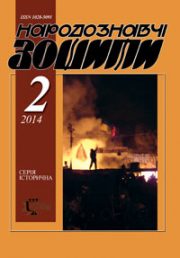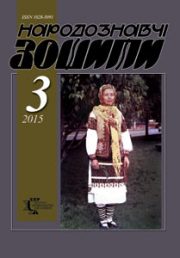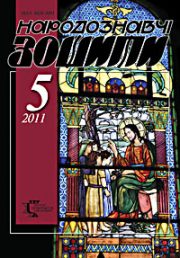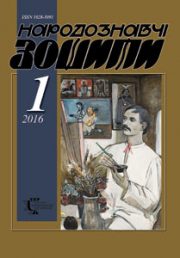The Ethnology Notebooks. 2019, 1 (145), 81—91
UDK 745.52.031.4(477.86-2)”20″
DOI https://doi.org/10.15407/nz2019.01.081
KNYSH Bogdana
Candidate of Sciences in Art Studies,
Kosiv’s Institute of Applied and Decorative Arts
Lviv National Academy of Arts
2, Mitskevych Str., 78600, Ivano-Frankivsk area, Kosiv, Ukraine,
Candidate of Art Studies, Ph.D,
38, Kubiiovycha Str., 79011, Lviv, Ukraine
Contacts: e-mail: bogdana1973@gmail.сom
Abstract. The article is dedicated to the traditional folk lizhnyk making, which currently exists on the territory of Hutsulshchyna. The forms and the technologies of its making were preserved, but the artistic style has the tendencies to change. The stages of the development of compositional schemes and local differences of folk Hutsul lizhnyk making in Kosiv, Verkhovyna districts of Ivano-Frankivsk Region, in Putyla, Vyzhnytsia districts of Chernivtsi region and Rakhiv district of Transcarpathian region are briefly represented in this article. The process of integrating traditions into the modern Hutsul folk lizhnyk production is considered mainly in the villages of Ivano-Frankivsk region.
Keywords: lizhnyk (woollen blanket), folk Hutsul lizhnyk making, traditional schemes and ornaments.
Received 3.02.2019
REFERENCES
Shukhevych, V.O. (2018). Hutsulshchyna (Vol. 2). Kharkiv: Oleksandr Savchuk [in Ukrainian].
Vytvytskyi, S. (1993). Historical essay about Hutsuls. Kolomyia: Svit [in Ukrainian].
Sydorovych, S. Yo. (1979). Artistic cloth of Western regions of the Ukrainian SSR. Kyiv: Naukova dumka [in Ukrainian].
Nykorak, O.I. (1988). Modern artistic textiles of the Ukrainian Carpathians. Kyiv: Naukova dumka [in Ukrainian].
Nykorak, O.I. (2004). Interior textiles (based on the materials of Western Regions of Ukraine). In Ukrainian folk cloth of the 19th—20th centuries. Typology, localization, artistic peculiarities (pp. 267—279, 533—571). Lviv: The National Academy of Science of Ukraine; The Institute of ethnology.
Nykorak, O.I. (2018). The traditions of Ukrainian folk lizhnyk making in the creative work of modern artists. The Ethnology notebooks, 5 (143), 1077—1095 [in Ukrainian].
Oleshchuk, I., & Shkribliak, M. (2018). Hutsul lizhnyk (woollen blanket): the discourse through the ages (scientific and expeditionary sketches). Chernivtsi: Druk Art [in Ukrainian].
Bohatchuk, O. (1993). The Union «Hutsul Art» in Kosiv. Narodnyi dim, 2, 9—14 [in Ukrainian].
Retrieved from: https://hucul.if.ua/ua/shop/category/35/tkan%D1%96virobi/l%D1%96gniki.html
Retrieved from: https://hucul.if.uhttp://kosivbazar.net.ua/ua/category/7
Retrieved from: http://zgarda.com.ua/wool-and-woven-products/lignuku/.
Losіuk, P. (Ed.). (2011). Colorfulwonder. Kosiv: Pysanyi kamin’ [in Ukrainian].







